
| Ambrax Swallowtail (previously known as Princeps ambrax) PAPILIONIDAE, PAPILIONOIDEA | (donherbisonevans@yahoo.com) and Stella Crossley |
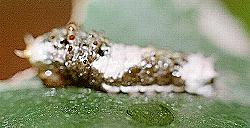

| Ambrax Swallowtail (previously known as Princeps ambrax) PAPILIONIDAE, PAPILIONOIDEA | (donherbisonevans@yahoo.com) and Stella Crossley |

The Caterpillar of this species is initially black and white.
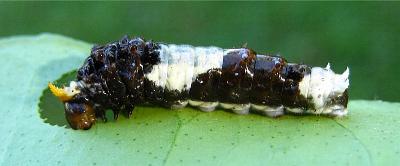
When disturbed, early instars produce a pair of yellow fleshy horns from behind the head.
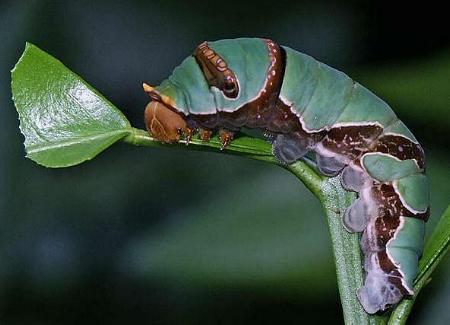
The last instar is quite different in shape and coloration from the early instars, being green with black bands outlined in white. It has a brown head.

When provoked, it displays a pair of red osmeteria.
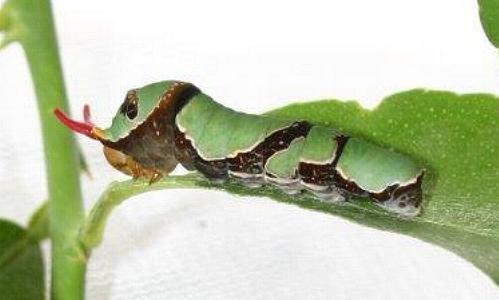
The caterpillar feeds on various species in the family RUTACEAE : the Australian natives :
and the introduced
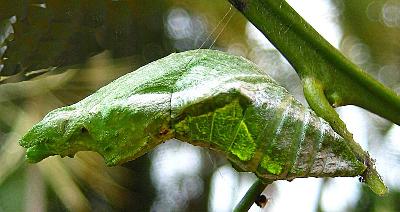
The pupa is green and naked. It is attached to the stem of its foodplant by a cremaster at the tail and a silk girdle around the middle.
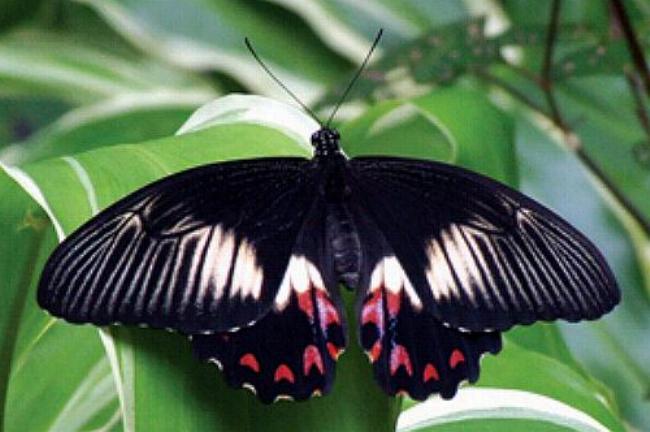
The adults have black wings with a white mark near the front wingtip, and a large white patch on each hindwing. The hind wings also have some red spots near the margin.
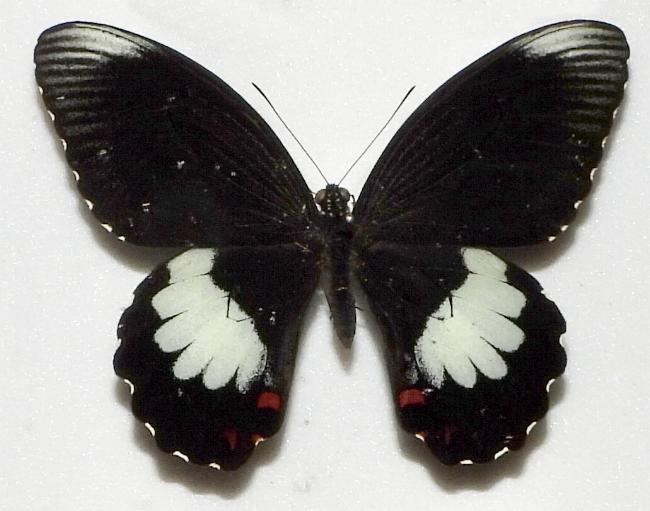
The female has more extensive white markings on the forewings. They both have a wingspan of about 8 cms.
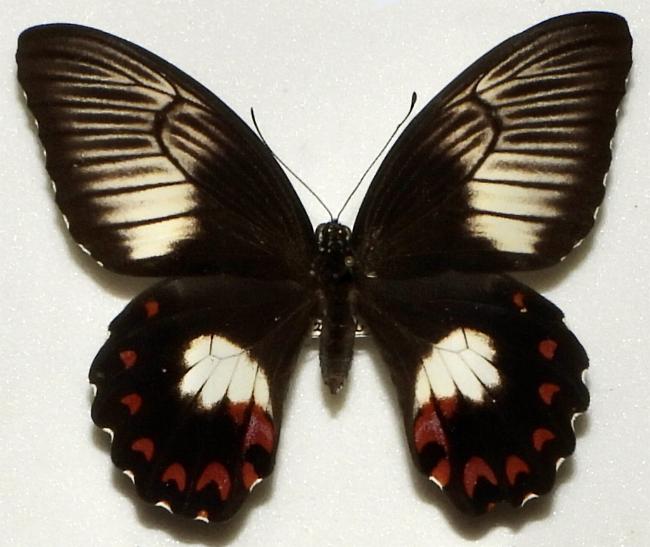
The undersides are similar, with additional blue spots on the hindwings.
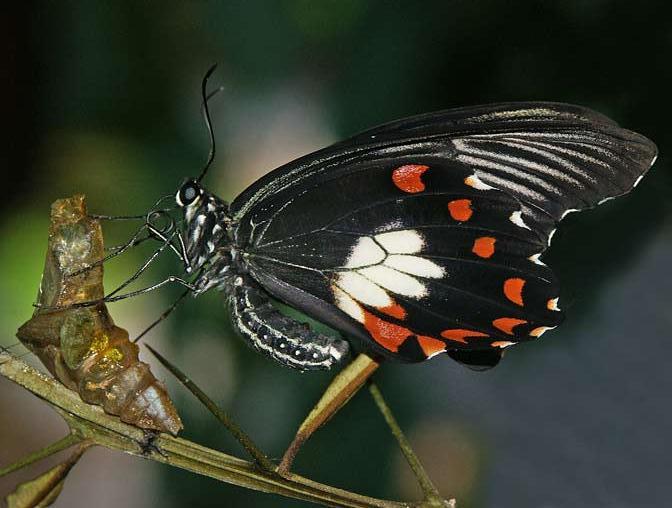
The species occurs as various subspecies in
and in Australia (as subspecies egipius Miskin, 1876) in:
Further reading :
Jean Baptiste Boisduval, in Jules-Sébastien-César Dumont d'Urville,
Faune Entomologique,
Voyage de Decouvertes de la Corvette l'Astrolabe,
Division 7, Volume 1 (1832), p. 40, No. 5.
Michael F. Braby,
Butterflies of Australia,
CSIRO Publishing, Melbourne 2000, vol. 1, pp. 270-271.
Ross Kendall,
Images of Butterfly Larvae,
Butterflies and Other Invertebrates Club,
Metamorphosis Australia,
Issue 55 (December 2009), p. 32.
Buck Richardson,
Tropical Queensland Wildlife from Dusk to Dawn Science and Art,
LeapFrogOz, Kuranda, 2015, p. 233.
 caterpillar |  butterflies |  Lepidoptera |  moths |  caterpillar |
(updated 7 November 2011, 9 August 2024)